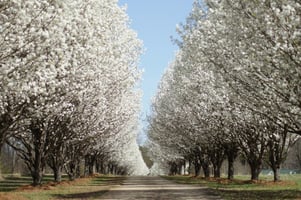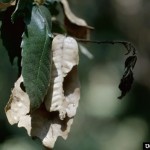This time of year, it is quite common to see conservation departments, local nurseries, and tree...
The Unsung Heroes of St. Louis: The Vital Role of Fungi and Insects in Tree Health
When we think of the lush greenery that adorns our urban landscape in St. Louis, we often picture majestic trees standing tall against the skyline, providing shade, beauty, and habitat for wildlife. However, behind the scenes, a complex web of life exists that plays a crucial role in maintaining the health and vitality of these trees—namely, fungi and insects. While some may view insects and fungi as mere pests or nuisances, in fact, many are essential partners in the ecosystem. Understanding these relationships is key to appreciating the balance of nature in our city.
The Role of Fungi in Tree Health
Fungi are a diverse group of organisms that play several critical roles in the health of trees. Here are a few key functions:
- Nutrient Cycling: Fungi are nature's recyclers. They break down organic matter like fallen leaves, dead trees, and other plant materials, returning essential nutrients to the soil. This process enriches the soil, making it more fertile and allowing trees to absorb vital nutrients.
- Mycorrhizal Relationships: Many trees form symbiotic relationships with mycorrhizal fungi. These fungi attach to tree roots and expand their reach into the soil, helping trees absorb water and nutrients more efficiently. In exchange, the fungi receive carbohydrates produced by the trees through photosynthesis. This relationship is so beneficial that some estimates suggest over 90% of plant species rely on mycorrhizal associations to thrive.
- Disease Resistance: Certain fungi can also help trees fend off diseases. By colonizing the tree's root systems or bark, beneficial fungi can outcompete harmful pathogens, reducing the likelihood of infection.
The Importance of Insects
Insects, too, play a critical role in the health of St. Louis's trees. Here’s how they contribute positively:
- Pollination: Many tree species rely on insects for pollination. Bees, butterflies, and other pollinators help facilitate the reproduction of flowering trees, ensuring the continuation of various tree species. This is particularly important in maintaining biodiversity.
- Decomposition: Insects such as beetles and ants help break down dead plant material, contributing to nutrient cycling. By decomposing fallen leaves and dead trees, they help create organic matter that enriches the soil.
- Food Source for Wildlife: Insects serve as a vital food source for birds, small mammals, and other wildlife, thus supporting the larger ecosystem. Healthy tree populations provide habitats for these animals, creating a dynamic and interconnected web of life.
The Dark Side: Pests and Pathogens
While many insects and fungi are beneficial, it’s important to acknowledge that some are indeed harmful to trees. Here are a few examples:
- Invasive Insects: Certain insects, such as the Emerald Ash Borer and the Asian Longhorned Beetle, pose significant threats to tree health. These pests can decimate entire populations of trees, leading to loss of biodiversity, increased soil erosion, and altered urban landscapes.
- Pathogenic Fungi: Some fungi are pathogenic, meaning they can cause diseases in trees. For example, the oak wilt fungus can spread rapidly through root systems, leading to the death of oak trees. Such diseases can weaken tree populations and disrupt local ecosystems.
- Pest Infestations: Insects like aphids and spider mites can weaken trees by feeding on their sap, leading to reduced growth and vitality. While they may not threaten entire populations immediately, they can make trees more susceptible to other stressors.
Finding Balance: The Importance of Integrated Pest Management (IPM)
Given the dual role of insects and fungi in tree health, it's essential to approach tree care with a balanced perspective. Integrated Pest Management (IPM) strategies can help protect trees without resorting to harmful pesticides. This approach involves monitoring tree health, identifying beneficial and harmful species, and implementing targeted interventions only when necessary.
In St. Louis, the intricate relationships between trees, fungi, and insects are fundamental to the health and sustainability of our urban forest. By recognizing the importance of these organisms, we can foster a more resilient ecosystem that supports biodiversity and enhances our quality of life. As stewards of this environment, embracing both the beneficial and the harmful aspects of nature allows us to maintain the beauty and health of our trees for generations to come. So next time you stroll through a park or walk down a tree-lined street, take a moment to appreciate the unseen heroes at work beneath the surface.
St. Louis Tree Pros
314-312-1331
info@stltreepros.com



